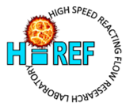Supersonic Combustion
Supersonic Combustion, colloquially referred to as detonation, epitomizes a captivating facet of combustion dynamics. This unique form of combustion is orchestrated through the emergence of a shock wave that accompanies the flame wave, propelling it to extraordinary supersonic velocities within the flammable mixture. This interaction gives rise to distinct combustion characteristics, making supersonic combustion an intriguing domain in the realm of combustion science and technology.
Within the purview of this intricate phenomenon, HiREF commands a pioneering stance. The laboratory’s research scope encompasses an in-depth exploration of detonation, unveiling its potential in engine and propulsion applications. This profound commitment finds its roots in the advanced understanding of combustion dynamics that underpin the efficacy of supersonic combustion.
Beginning with pulse detonation engines, HiREF’s journey into supersonic combustion is marked by a systematic progression. These engines exploit the detonation process to enhance propulsion and energy generation. HiREF’s research extends further to rotating detonation engines, a technology poised to revolutionize propulsion systems by harnessing the sustained detonation phenomenon.
HiREF’s engagement with supersonic combustion traverses theoretical investigations, computational modeling, and experimental validations. By rigorously examining the intricacies of detonation, the laboratory’s researchers contribute to the advancement of efficient, high-thrust propulsion systems and energy conversion methodologies. Collaborative endeavors with academic institutions, industry partners, and international research networks amplify the impact of HiREF’s supersonic combustion research.
In essence, HiREF’s exploration of supersonic combustion aligns with its overarching mission of advancing combustion-related technologies. Through meticulous research, innovation, and a multidisciplinary approach, HiREF not only contributes to the theoretical underpinnings of supersonic combustion but also translates these insights into tangible solutions that have the potential to revolutionize propulsion systems, energy generation, and various high-speed applications. As HiREF continues to push the boundaries of combustion science, it emerges as a beacon of knowledge and innovation in the realm of supersonic combustion, shaping the future of propulsion and energy conversion.
